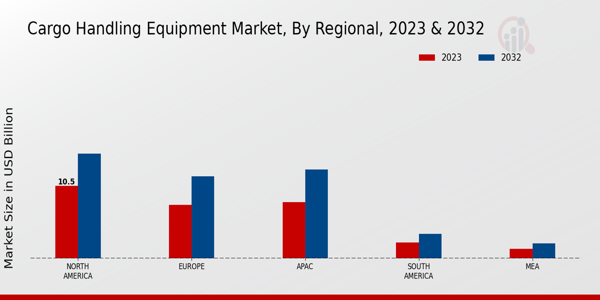The Cargo Handling Equipment Market is characterized by a dynamic competitive landscape driven by technological advancements, increasing demand for efficient logistics solutions, and the growing volume of international trade. This market encapsulates a wide range of equipment, including cranes, forklifts, and automated guided vehicles, among others, utilized in ports, warehouses, and distribution centers. The competitive insights reveal a trend towards innovation as companies strive to differentiate their products and services through enhanced automation and connectivity, addressing the emerging needs of supply chain efficiency and sustainability.
In this environment, leading manufacturers are also focusing on strategic partnerships and acquisitions to bolster their market presence and expand their product portfolios, thereby enhancing their competitive advantage. Cargotec stands out in the Cargo Handling Equipment Market due to its strong commitment to innovation and sustainability. The company has developed a comprehensive range of products aimed at improving the efficiency of cargo handling processes in various sectors, including shipping, logistics, and ports. Cargotec’s strengths lie in its advanced technological capabilities, particularly in automation and smart logistics solutions, which allow customers to optimize operations and reduce costs.
The integration of data analytics and IoT in their equipment further enhances performance, making Cargotec a formidable player in delivering state-of-the-art cargo handling solutions. Additionally, the company’s strategic focus on service-oriented offerings ensures that it maintains strong relationships with clients, enhancing customer loyalty and retention. JCB, renowned for its robust engineering and manufacturing prowess, has also established a significant presence in the Cargo Handling Equipment Market. With a diverse product portfolio that includes machine types designed specifically for material handling, JCB emphasizes versatility and durability.
The company's strengths include a strong emphasis on research and development that leads to the introduction of innovative features in its equipment, enhancing productivity and safety. JCB’s commitment to customer service and providing tailored solutions contributes to its reliability and reputation within the market. Furthermore, aggressive expansion strategies in emerging markets and investments in sustainability initiatives position JCB favorably against competitors, ensuring its continuous relevance in the evolving landscape of cargo handling equipment.
























Leave a Comment